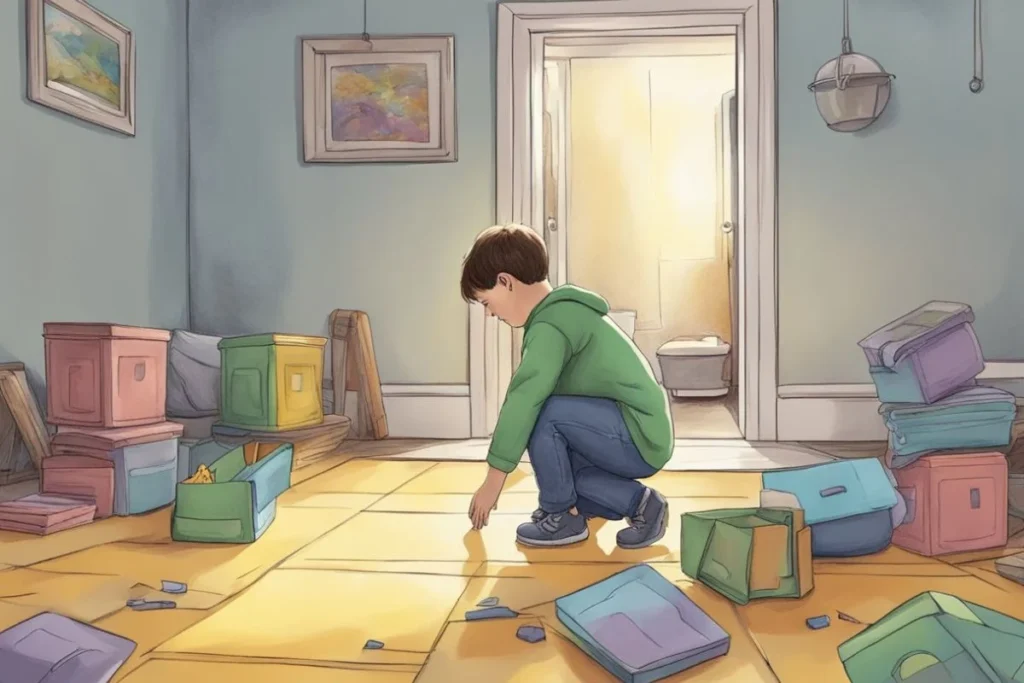Separation anxiety is a common condition in children, which is characterized by feelings of fear and distress when separated from a primary caregiver. However, children with autism spectrum disorder (ASD) may experience separation anxiety differently than typically developing children.
Children with autism may have difficulty communicating their feelings and emotions, which can exacerbate feelings of anxiety. This can make it challenging for parents and caregivers to identify the root cause of their child’s anxiety. Additionally, children with ASD may become fixated on routines and rituals, which can make it challenging to adapt to new situations, such as being separated from a caregiver.
It is important to note that not all children with autism experience separation anxiety, and those who do may experience it to varying degrees. However, for those who do experience separation anxiety, it can be a significant source of stress for both the child and their caregiver.
Parents and caregivers of children with autism who experience separation anxiety should work with their child’s healthcare provider to develop a plan for addressing the anxiety. This may include developing a consistent routine, providing reassurance, and gradually exposing the child to new situations in a supportive environment.
Identifying Symptoms
Separation anxiety is a common issue among children with autism. It is important to identify the symptoms to provide effective treatment. The following subsections will describe the symptoms related to autism and separation anxiety.
Autism-Related Symptoms
Children with autism may experience difficulties with social interaction and communication. They may also have repetitive behaviors or interests. These symptoms may contribute to the development of separation anxiety.
For instance, a child with autism may have difficulty understanding the concept of time. They may not understand when their parent will return, leading to anxiety when separated. Additionally, sensory issues may cause discomfort and anxiety when separated from familiar environments or people.
Separation Anxiety Symptoms
Children with separation anxiety may exhibit several symptoms when separated from their primary caregiver. These symptoms may include crying, protesting, or becoming visibly upset. They may also experience physical symptoms such as headaches or stomachaches.
It is important to note that separation anxiety may occur even when separated for short periods. Children with separation anxiety may also have difficulty sleeping or experience nightmares.
Intervention Strategies
When it comes to helping children with autism cope with separation anxiety, several intervention strategies can be effective. Two of the most common approaches are behavioral and therapeutic support.
Behavioral Approaches
Behavioral approaches involve teaching children with autism new skills and behaviors that can help them better cope with separation anxiety. One effective strategy is to gradually expose the child to separation in a controlled and supportive environment. This can be done by gradually increasing the amount of time the child spends away from their caregiver, starting with just a few minutes and gradually increasing the time as the child becomes more comfortable.
Another behavioral approach is to use positive reinforcement to encourage the child to engage in appropriate behaviors when separated from their caregiver. This can be done by rewarding the child with praise, stickers, or other small rewards when they successfully cope with separation anxiety.
Therapeutic Support
Therapeutic support involves working with a therapist or counselor to help the child with autism develop coping strategies and manage their anxiety. One effective approach is cognitive-behavioral therapy, which involves helping the child identify and challenge negative thoughts and beliefs that may be contributing to their anxiety. This can be done through a variety of techniques, including role-playing, relaxation exercises, and cognitive restructuring.
Another therapeutic approach is play therapy, which involves using play to help the child express their emotions and develop coping strategies. This can be especially effective for younger children who may have difficulty expressing their feelings through words.
Impact on Family Dynamics
Families with a child with autism often face unique challenges that can impact the dynamics of the family unit. One of the challenges that families may face is separation anxiety, which can affect both parents and siblings of the child with autism.
Parental Challenges
Parents of children with autism may experience significant stress and anxiety related to their child’s separation anxiety. They may feel guilty for leaving their child, worry about their child’s safety, and feel overwhelmed by the demands of caring for a child with autism. Additionally, parents may experience financial stress related to the cost of therapy and other services for their child.
To help parents cope with the challenges of separation anxiety, it is important to provide them with support and resources. This may include counseling, support groups, and respite care to give parents a break from their caregiving responsibilities.
Sibling Relationships
Siblings of children with autism may also be impacted by their sibling’s separation anxiety. They may feel left out or neglected when their parents focus their attention on their sibling with autism. Siblings may also feel frustrated or embarrassed by their sibling’s behavior in public.
To help siblings cope with the challenges of having a sibling with autism, it is important to provide them with support and resources. This may include sibling support groups, counseling, and opportunities for one-on-one time with their parents.
Resources and Support Systems
Parents and caregivers of children with autism and separation anxiety can find many resources and support systems to help them navigate their child’s needs. Here are some options:
Therapy
Therapy can help children with autism and separation anxiety learn coping mechanisms and develop skills to manage their anxiety. According to ABA Therapy Resources, relaxation techniques such as deep breathing and progressive muscle relaxation can help children cope with separation anxiety.
Support Groups
Support groups can offer parents and caregivers a sense of community and understanding. They can also provide helpful tips and advice on how to support children with autism and separation anxiety. Autism Speaks suggests that parents and caregivers should reach out to local autism organizations to find support groups in their area.
Education
Educating oneself on autism and separation anxiety can help parents and caregivers better understand their child’s needs and how to support them. The Place for Children with Autism recommends that parents and caregivers read books and articles on the topic, as well as attend workshops and conferences.
Technology
Technology can be a helpful tool for children with autism and separation anxiety. GetGoally suggests that parents and caregivers can use apps and devices to create visual schedules and reminders for their children, as well as to help them practice calming techniques.
In summary, there are many resources and support systems available for parents and caregivers of children with autism and separation anxiety. Therapy, support groups, education, and technology are just a few options to consider.







